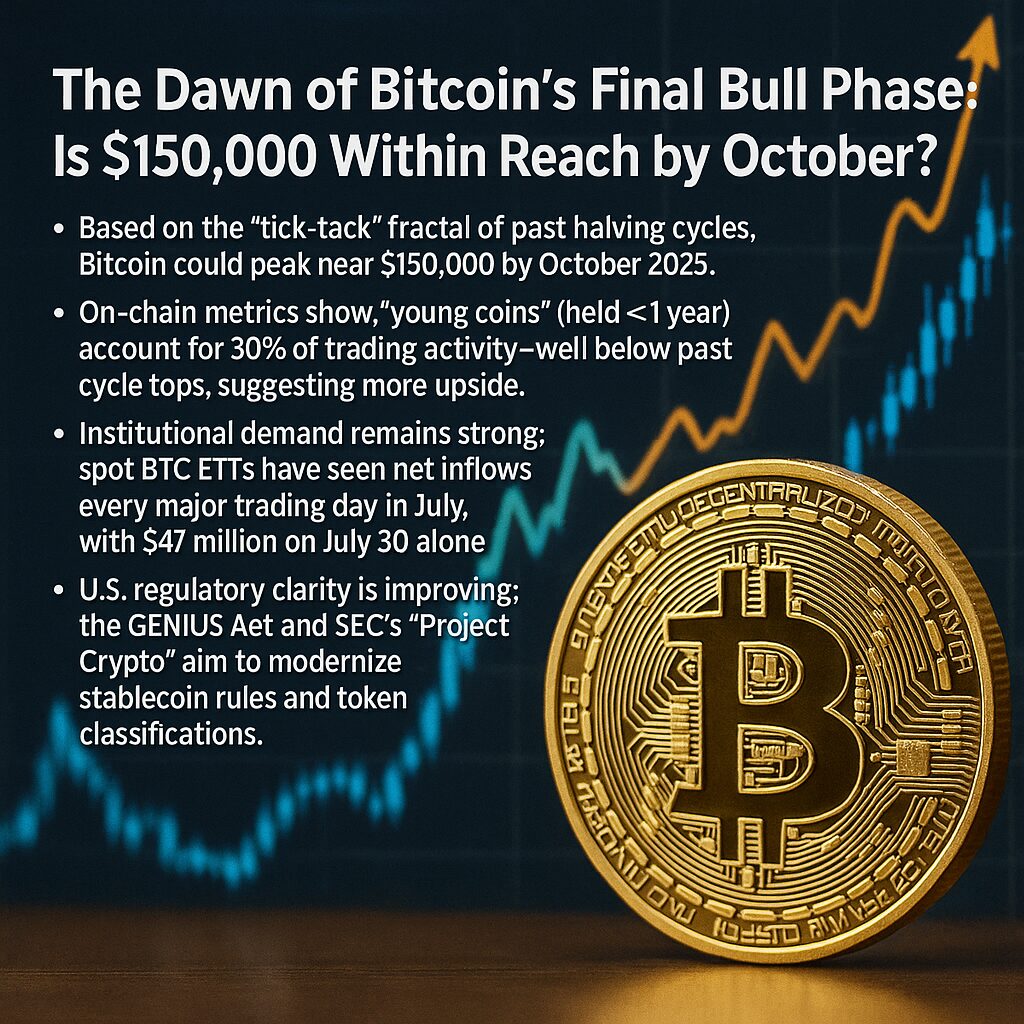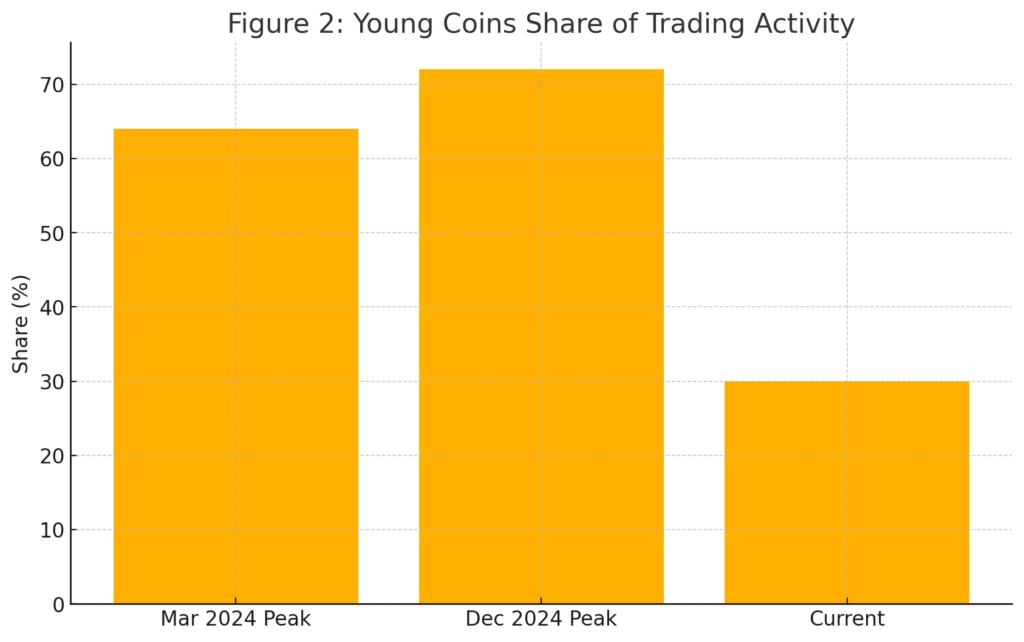
Main Points:
- Based on the “tick-tack” fractal of past halving cycles, Bitcoin could peak near $150,000 by October 2025.
- On-chain metrics show “young coins” (held <1 year) account for 30% of trading activity—well below past cycle tops, suggesting more upside.
- Institutional demand remains strong: spot BTC ETFs have seen net inflows every major trading day in July, with $47 million on July 30 alone.
- U.S. regulatory clarity is improving: the GENIUS Act and SEC’s “Project Crypto” aim to modernize stablecoin rules and token classifications.
- Strategic takeaways for investors: adjust portfolio allocations, manage risk around key halving dates, and stay informed on regulatory shifts.
1. Halving Cycle Fractal and the October Peak
Analyst CryptoBullet tracks a “tick-tack” fractal pattern showing that Bitcoin historically peaks 518–546 days after each halving. The last halving on April 15, 2024, implies a peak window opening around early October 2025. If history repeats, that could coincide with a price approaching $150,000. Many analysts forecast an end-of-year range between $130,000 and $150,000, with some even bullishly eyeing $200,000 on sustained macro liquidity and ETF growth.
【Insert Figure 1 here】
(Figure 1: BTC Price Fractal Projection Since Halving )

2. On-Chain Data and Age-Based Supply Dynamics
On-chain analytics from CryptoQuant’s Axel Adler Jr. reveal that “young coins” (acquired <1 year ago) constitute only 30% of total trading activity—far below the 64% and 72% observed at the March and December 2024 cycle peaks, respectively. Historically, such elevated young-coin dominance signals overheated markets and imminent local tops. Today’s comparatively low figure suggests room for further upside before capitulation risk emerges.
【Insert Figure 2 here】
(Figure 2: Young Coins Share of Trading Activity )

3. Institutional Demand: Spot Bitcoin ETFs
Institutional inflows into U.S. spot Bitcoin ETFs have been remarkably consistent in July 2025, with net inflows on 29 of the past 33 trading days and $47.03 million on July 30 alone (BlackRock’s IBIT led with $34.47 million; Bitwise’s BITB added $12.66 million). July has emerged as the top-performing month for BTC ETFs in 2025, totaling $6.13 billion—the second-best since their launch. This persistent institutional demand underpins the bull thesis and could drive prices toward the projected halving peak.
4. Regulatory Developments: GENIUS Act and “Project Crypto”
On July 30, 2025, the White House’s President’s Working Group released a 160-page report with sweeping digital-asset policy recommendations, including proposals to consolidate exchange and broker roles and modernize trading infrastructure under the GENIUS Act framework. Concurrently, the SEC launched “Project Crypto” to clarify token classifications (security, commodity, stablecoin) and ease pathways for ICOs on regulated platforms. Together, these initiatives aim to bolster investor protection while fostering U.S. leadership in blockchain innovation.
5. Strategic Takeaways for Investors
- Portfolio Allocation: Consider overweighting Bitcoin ahead of the anticipated October peak, but hedge with exposure to Ethereum, which saw a 56% surge in July 2025 spot-ETF inflows (ending at $3,862).
- Risk Management: Use trailing stops or options strategies to lock in gains as price approaches historical fractal targets.
- Timing & Monitoring: Mark April 15 (halving anniversary) and early October on your calendar. Watch on-chain young-coin metrics and ETF flow data for signs of exhaustion.
- Regulatory Watch: Stay informed on GENIUS Act rulemaking and SEC guidance, especially around stablecoin reserve requirements and token registration.
Conclusion
All signs point to Bitcoin entering the final leg of its 2024–2025 bull run, with a historical fractal targeting a peak around $150,000 by October 2025. Robust institutional ETF inflows, balanced on-chain supply dynamics, and advancing U.S. regulatory clarity combine to support this outlook. However, savvy investors should manage risk with disciplined exits and diversified exposure—while keeping a close eye on on-chain signals and policy updates that could accelerate or temper the rally.

